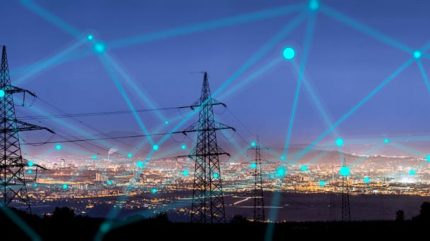Navigating the growing risks in power grid connectivity
November 21, 2024

The global energy landscape is changing rapidly, but the electricity grid infrastructure is struggling to keep pace. As renewable energy sources such as solar and wind surge ahead, the underlying power grids, designed decades ago, are now showing their age. Their lack of expansion and buildout to modern demands is becoming increasingly problematic, especially for data centres, which are some of the largest consumers of electricity.
At the heart of this issue lies the tension between growing demand and limited capacity. While efforts are underway to expand grid networks, these projects often face significant delays due to regulatory hurdles, high infrastructure costs, and long construction timelines. For the fast-growing data centre industry, these delays mean continued vulnerability to power disruptions, as grid expansions are unlikely to meet most demand anytime soon.
Hybrid energy solutions for data centres
As digital technologies continue to evolve, data centres must find reliable, immediate solutions to ensure operational continuity. This is where hybrid power setups, incorporating both backup and prime power sources, can play a vital role. With their extensive electricity requirements, data centres can no longer solely rely on an outdated grid. They must proactively adopt alternative energy solutions that offer both reliability and scalability; waiting six to seven years for a grid connection is no longer an option.
Microgrids and gas engine power plants have emerged as attractive alternatives, providing flexibility and resilience that traditional grid systems lack. In fact, according to GlobalData, the global microgrid market registered a market value of $28.86 billion in 2022 and is estimated to reach $60.61 billion by 2027. [1]
While battery storage systems can help to some extent, they often lack the capacity to provide long-duration power during outages. INNIO Group provides a solution with its Jenbacher “Ready for H2” power generation technology. The Jenbacher Type 6 engine offers a proven, efficient power supply that can be used in hybrid setups. These generators can function either as backup with the same start performance as traditional diesel backup generators or as a primary energy source while companies wait for their grid connection to be established, ensuring that critical systems in data centres remain operational even when the grid falters.
Renewable energy and gas engine-based power generation
The rise of renewable energy sources, while positive, introduces another layer of complexity. Solar and wind power are intermittent by nature, which creates challenges for data centres that require a constant, stable power supply. Gas generators can offer rapid, reliable power generation that complements renewable energy by filling in the gaps when the sun doesn’t shine, or the wind doesn’t blow.
Hybrid systems that combine gas generators with renewables and battery storage provide a robust, future-proof solution for data centres. These setups can ensure uninterrupted operations while helping companies meet their sustainability goals. For instance, INNIO Group’s Jenbacher generators are designed to switch seamlessly between natural gas and renewable energy sources like renewable natural gas (also known as biomethane) or hydrogen, offering both immediate and long-term solutions for decarbonisation.
Jenbacher natural gas generators can deliver up to 90% less NOx emissions than Tier 4 diesel generators and zero carbon emissions when operated on hydrogen, making them a cleaner choice for industries looking to reduce their carbon footprint. However, as part of the ongoing energy transition, these generators are also “Ready for H2,” meaning that in general they can be converted to operate on up to 100% hydrogen in the future.*
This flexibility allows data centres to future-proof their energy infrastructure, gradually shifting towards a more sustainable power supply.
The grid’s bottleneck
While the push toward renewable energy is essential for decarbonisation, it presents significant challenges for existing power grids. Grid infrastructure is struggling to integrate the growing volume of renewable energy, with many projects waiting in long queues for connection. The International Energy Agency warns that without significant investment, grid infrastructure could become the weak link, jeopardising clean energy transitions. The world needs to add or replace 80 million kilometres of power lines by 2040 to meet climate targets.
The mismatch between renewable energy deployment and grid upgrades is exacerbating the situation. While renewable capacity is expanding rapidly, grid upgrades are progressing at a much slower pace, leading to issues such as network inadequacy and instability. Grid modernisation, with improved real-time monitoring and the adoption of energy storage technologies, is crucial for managing this intermittency and ensuring power reliability.
In the data centre industry, reliability is paramount, and power outages are simply not an option. This makes the case for investing in resilient, flexible energy systems even stronger. INNIO Group’s Jenbacher generators are not only designed to support the current power demands but also to evolve alongside the energy landscape, as hydrogen infrastructure becomes more widespread. The ability to transition from natural gas to hydrogen provides companies with the confidence that their investment today will remain relevant tomorrow.
The pressure to decarbonise and enhance energy efficiency is only set to increase as regulatory bodies tighten their environmental standards. Data centres, often criticised for their high energy consumption, are at the forefront of this challenge. With emissions needing to drop by 50% by 2030 to meet global climate goals, the industry cannot afford to wait for the grid to catch up. Instead, operators must look to hybrid power solutions that offer the immediate reliability of gas generators and the future promise of hydrogen.
The future of data centre power
Alternative solutions to overcome grid constraints include the deployment of microgrids, gas-powered generators, and renewable energy sources such as solar and wind, often paired with battery storage systems. However, solar and wind require a much larger physical footprint compared to gas-powered solutions and can take years to be built making them less efficient for certain applications. Mobile solutions, meanwhile, provide immediate possibilities to ramp up new data centres, and advanced technologies like AI-driven energy management and demand-response systems are helping to further optimise energy use and enhance grid resilience.
David Bell, Vice President of Utility and Microgrid Development from VoltaGrid, an independent power provider and one of INNIO Group’s key clients, said: “Our solution is a turnkey natural gas and or compressed natural gas (CNG) microgrid, designed to provide reliable, behind-the-meter power completely off the grid or synchronised with the grid. This scalable solution of up to several 100MW’s per site ensures rapid deployment and delivers continuous firm power. VoltaGrid uses data aggregation and operational optimisation through AI, helping the data centre industry to overcome grid constraints while keeping reliable energy low-cost.
“We chose the Jenbacher natural gas generator for its proven efficiency, reliability, and ability to operate under demanding conditions. Its advanced technology provides lower emissions, higher fuel efficiency, and seamless integration with our microgrid systems, ensuring a robust, environmentally friendly, firm power solution tailored by either supplementing or eliminating the dependency on the grid.”
INNIO Group’s Jenbacher gas-powered generators, with their ability to adapt to a wide range of energy sources, provide a compelling case for data centres to invest in resilient, future-proof energy infrastructure. To find out more about INNIO Group’s Jenbacher net-zero backup solution for data centres, download the whitepaper below.
[1] GlobalData – Distributed Power Generation 2024* Details on the cost and timeline for a future conversion may vary and need to be clarified individually
<!– –>
Search
RECENT PRESS RELEASES
Related Post





